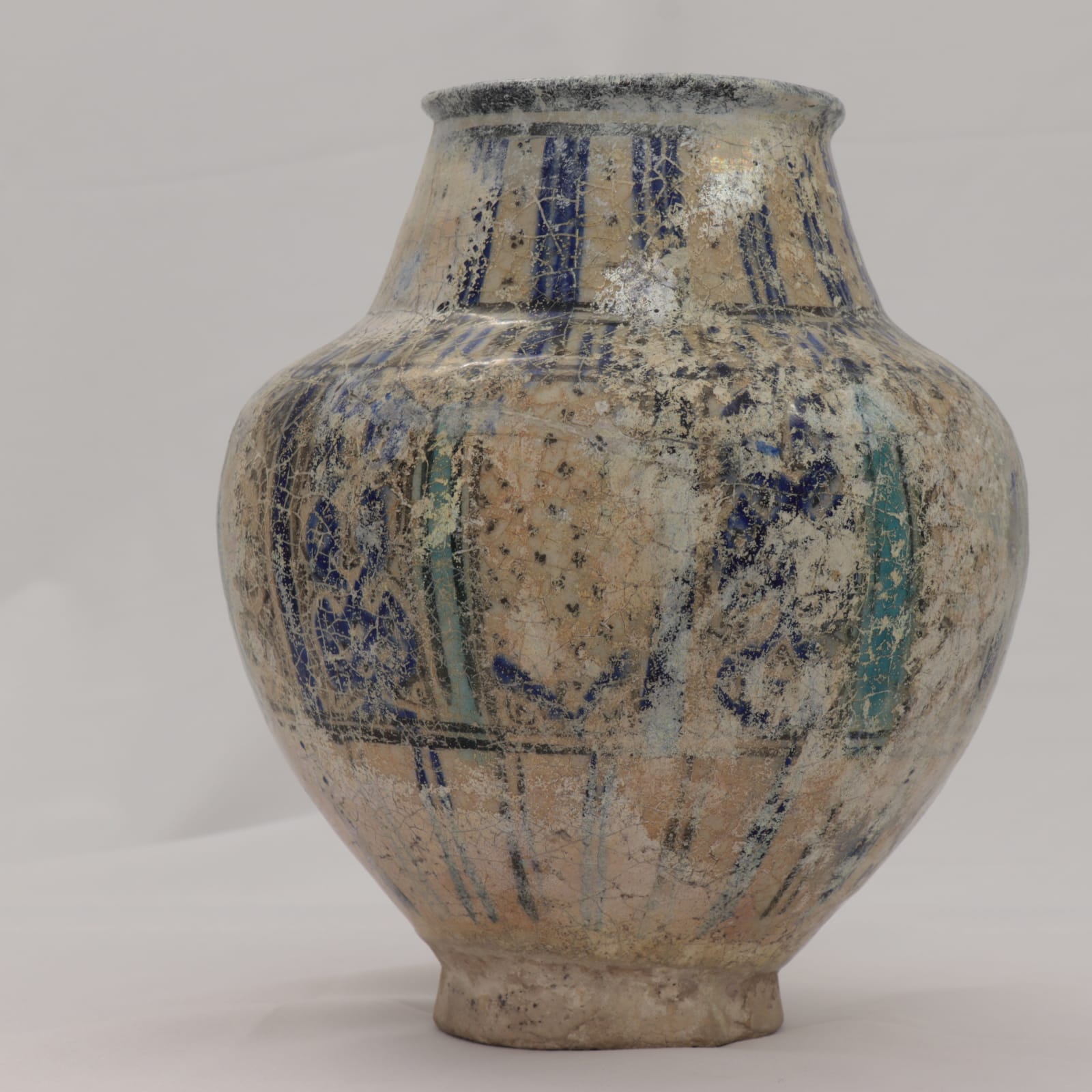Ayyubid Raqqa-ware Jar, Twelfth to Thirteenth Century AD
Fritware, Pigment
21.9 x 18.1 cm
8 5/8 x 7 1/8 in
8 5/8 x 7 1/8 in
LI.3010
Further images
Description This stunning jar is finely decorated with underglaze painting in blue and black, typical of the Mamluk production in Syria and it was probably manufactured at al-Raqqa. Underglaze is...
Description
This stunning jar is finely decorated with underglaze painting in blue and black, typical of the Mamluk production in Syria and it was probably manufactured at al-Raqqa. Underglaze is a method of decorating pottery in which painted decoration is applied to the surface before it is covered with a transparent ceramic glaze and fired in a kiln, where it finally acquires its brilliant and luminous appearance. The jar is of baluster shape, slightly concave cylindrical neck and everted lip, supported on a spreading foot, while the decoration includes floral medallions, black dots, and calligraphic motifs. Jars like this one were mainly used for storage but the fine decoration of this piece shows how even more humble objects deserved to be aesthetically pleasing during the Mamluk period. Jars of a similar shape and decoration, however with a slightly thicker neck, have been recently excavated at Tall Ḥisbān, Jordan, and are believed to be imported from Syria.
The Mamluk sultanate (1250–1517) emerged from the weakening of the Ayyubid realm in Egypt and Syria (1250–60). Within a short period of time, the Mamluks created the greatest Islamic empire of the later Middle Ages, which included control of the holy cities Mecca and Medina. The Mamluk capital, Cairo, became the economic, cultural, and artistic centre of the Arab Islamic world. Mamluk decorative arts—especially enameled and gilded glass, glazed ceramics, inlaid metalwork, woodwork, and textiles—were highly appreciated around the Mediterranean as well as in Europe, where they also stimulated the development of new local traditions and technologies.
This stunning jar is finely decorated with underglaze painting in blue and black, typical of the Mamluk production in Syria and it was probably manufactured at al-Raqqa. Underglaze is a method of decorating pottery in which painted decoration is applied to the surface before it is covered with a transparent ceramic glaze and fired in a kiln, where it finally acquires its brilliant and luminous appearance. The jar is of baluster shape, slightly concave cylindrical neck and everted lip, supported on a spreading foot, while the decoration includes floral medallions, black dots, and calligraphic motifs. Jars like this one were mainly used for storage but the fine decoration of this piece shows how even more humble objects deserved to be aesthetically pleasing during the Mamluk period. Jars of a similar shape and decoration, however with a slightly thicker neck, have been recently excavated at Tall Ḥisbān, Jordan, and are believed to be imported from Syria.
The Mamluk sultanate (1250–1517) emerged from the weakening of the Ayyubid realm in Egypt and Syria (1250–60). Within a short period of time, the Mamluks created the greatest Islamic empire of the later Middle Ages, which included control of the holy cities Mecca and Medina. The Mamluk capital, Cairo, became the economic, cultural, and artistic centre of the Arab Islamic world. Mamluk decorative arts—especially enameled and gilded glass, glazed ceramics, inlaid metalwork, woodwork, and textiles—were highly appreciated around the Mediterranean as well as in Europe, where they also stimulated the development of new local traditions and technologies.









